RetroLisa
----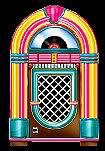 | __ | 1950s
Music & Entertainment | | |
|
___________________________________________________________________________________________________________
|
|
|
RetroLisa
__________________________________________
|
|
|
RetroLisa
| ___________________________________________________________________ | __ | _____________________________ | _______ | Music News & Trends
hit parade
In the early 1950s, the big bands and crooners of the previous decade were still popular. Vocal groups specialized in close harmonies and upbeat doo-wop music. Many female vocalists stepped out from behind the big band microphone to launch solo careers of their own.
Towards the end of the decade, calypso and lounge music went hand-in-hand with the exotic new Tiki lifestyle.
jazz & blues
These African-American musical styles originated in the 1890s. In the 1920s, they gained a small measure of popularity with white folks. By the 1950s, whites embraced the music wholeheartedly. During this decade, classic jazz evolved into progressive and cool jazz. Blues music was sanitized for white audiences and eventually became the basis for rock & roll.
country & folk music
In the old days, fiddle and banjo music was marketed to rural people and was generally dismissed as hillbilly music. In the 1950s, country music entered the mainstream. The use of electric guitars gave it a modern sound, and a blurring of the lines between country, rock and blues meant that people from all walks of life could enjoy it.
Folk music enjoyed a brief period of popularity in the 1930s. In the early 1950s, a folk revival was ready to begin, but was suppressed when folk singers were harrassed and blacklisted during the McCarthy anti-communist witch hunts. In 1958, the folk movement enjoyed a rebirth that lasted well into the 1960s.
American Folk Music Revival
The Great Folk Scare & The Folkniks
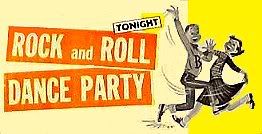
rock & roll
In 1951, Cleveland disc jockey Alan Freed began to play black rhythm & blues records for his white teenage listeners. In his search for a phrase that white audiences would find acceptable, he coined the term rock & roll. He also hosted record hops and teen dances under the nickname Moondog.
Rock's upbeat, sensual and rebellious nature made it wildly popular among young people. In 1954, it began to make an impact on the music charts. That same year, Freed left Cleveland to become a DJ at WINS in New York City. His career took off after that, and his teen dances and stage shows became legendary.
In 1956, rock music gained a wider audience when Bill Haley's "Rock Around The Clock" was featured in the movie The Blackboard Jungle.
Most adults hated rock music. In 1959, one particular newspaper article compared rock & roll singers to backwoods farmers doing hog calls. Elvis Presley, with his swiveling hips and sensual sneer, was one of the most controversial rock performers of the era.
Although rock & roll was aimed at teens, not all young people embraced the style right away. A 1958 survey of high school students revealed that Elvis Presley was only their third favorite singer, behind Pat Boone and Perry Como.
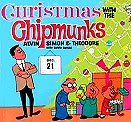
novelty songs
In 1958, Ross Bagdasarian (using the stage name David Seville) had a major hit with the novelty song "Witch Doctor." The chorus featured nonsense words sung in a comical voice created by speeding up the audio tape.
Later that year, Bagdasarian formed the Chipmunks and made a Christmas record using the same technology. Speeding up the tape gave Simon, Alvin and Theodore their unique voices, which were all provided by Bagdasarian himself. "The Chipmunk Song" was one of the top songs of the year, and the furry little trio would go on to record many cover versions of popular tunes.
music news
- In 1958, The National Academy of Recording Arts & Sciences gave out the first Grammy Awards.
- In 1959, the payola scandal revealed that many radio DJs were taking bribes to play records.
- In 1959, Berry Gordy founded both Tamla Records and Motown Records, which would come together under the Motown heading in 1960.
| |
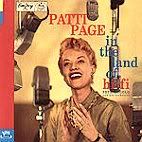
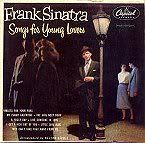
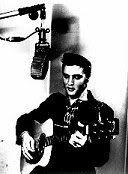
Elvis Presley in the recording studio
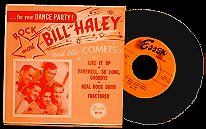

|
_________________________________________________
|
|
|
RetroLisa
| ___________________________________________________________________ | __ | _____________________________ | _______ | For The Record
78 RPM records
The oldest recording format in use was the 78 RPM record. These fragile shellac discs were ten inches wide and contained four minutes of music per side. Some labels also issued 12-inch records, which had a playing time of up to six minutes per side.
Longer musical selections and artist compilations required several discs. These boxed collections were called albums because the record sleeves folded out like the pages of a book.
A new era was upon us in the 1950s. The recent introduction of two new record formats caused sales of 78s to decline by half. Both Columbia and RCA Victor stopped making 78s in 1958, and the format was phased out completely in the early 1960s.
long-playing records
Long-playing records were introduced in 1948. These large vinyl discs used microgroove technology and a slower speed of 33 1/3 RPM, which resulted in an extended playback time of 23 minutes per side. LPs were originally offered in both 10-inch and 12-inch formats, but the smaller size proved unpopular and was phased out in the mid 1950s.
Although the LP format was originally intended for symphony recordings, it was also ideal for pop albums and Broadway cast recordings. After LPs were introduced, record labels were quick to reissue many of their best-selling album sets on LP. When rock and country music came to the forefront later in the decade, they also used the new format.

45 RPM records
45 RPM records were introduced in 1949. These discs were seven inches wide and made of durable vinyl plastic. Like the 78s that came before, this new format was perfect for short popular tunes. In the 1950s, some labels also issued extended play 45s, which contained two songs per side.
At first, industry leaders were afraid that 45s would be in direct competition with LPs. Each format quickly settled into its own niche, with 45s being used for singles and LPs for albums.
tapes
Reel-to-reel tape recorders came on the market in 1947. Prerecorded albums on tape were first offered for sale in 1954. Classical, jazz and big band recordings were sold on tape at this point. Rock and country music wouldn't be widely offered on tape until the 1960s.

stereo
The recording industry conducted early stereo experiments in the 1930s and made the first stereo recordings available in the 1950s. The technology was offered on reel-to-reel tapes beginning in 1954 and on LPs in 1958.
soundtracks & original cast albums
An original cast album recreates the songs from a Broadway show, exactly as they are heard on stage. By using the same singers, musicians and arrangements as the stage version, the recording is considered a souvenir of the Broadway performance. The first Broadway musical to release a cast album was Oklahoma! in 1943.
In the 1950s, advances in recording technology made Broadway cast albums and movie soundtracks increasingly popular. Stereophonic sound enhanced the lifelike quality of a recording, and the long-playing record format made it possible for an entire soundtrack to fit on one disc.
record labels
general sites
50s Rock & Roll Reviews
Cash Box Top 100 Of The 50s
The Grammy Awards Year-By-Year
Oldies Music
Doo Wop Nation
| |
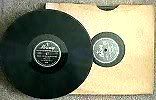
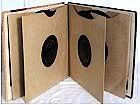


The popular Columbia Masterworks and Mercury Living Presence series featured classical works and soundtracks on LP
New Record Labels In The 1950s
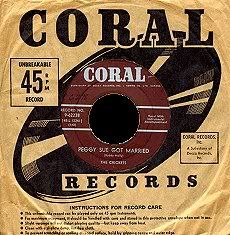
|
_________________________________________________
|
|
|
RetroLisa
| _______________________________________________________________ | __ | _____________________________ | ___________ | Fun & Amusement
put another nickel in...
Jukeboxes were first produced in the 1920s and reached the height of their popularity in the 1950s.
Jukebox History
Jukeboxes & Manufacturers
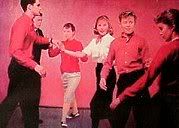
dancing
Popular dances in the 1950s included the Bop, Stroll, Madison, Cha-Cha, Hand Jive and Jitterbug. For teens in the 1950s, dances were less about romance and more about having fun with friends, and this trend resulted in the first partnerless group dances and line dances.
Teen Dances Of The 50s
Some Favorite 50s Dances
| |

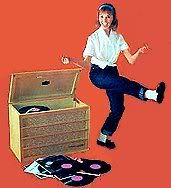
|
_________________________________________________
|
|
|
RetroLisa
| ___________________________________________________________________ | __ | _____________________________ | _______ | Live Entertainment
the old standards
After leaving MGM in 1950, Judy Garland turned to the concert stage. The high point of her career in the 1950s was a record-breaking appearance in 1951 at the Palace Theater in New York City.
Judy Garland: The Live Performances

Nightclubs were a major source of entertainment in the 1950s. Visit my Nightlife page for a peek at some 1950s nightclubs!

crazy, man
In New York City, the Greenwich Village coffee houses hosted bongo-playing beatniks doing poetry readings. Folk music was added to the lineup in 1958 when the folk movement picked up steam.
rock & pop
In 1951, Cleveland disc jockey Alan Freed coined the term rock & roll. He hosted stage shows and teen dances that were famous throughout Ohio. In 1954, he became a DJ at WINS in New York City. He continued to host rock & roll shows that were extremely popular among teenagers and extremely unsettling for their parents.
In 1959, the Winter Dance Party Tour was scheduled to send Buddy Holly, Ritchie Valens and the Big Bopper to 24 cities in three weeks. Tragedy struck just ten days into the tour, when a plane crash claimed the lives of all three headliners. This would forever be known as the day the music died.
Between 1959 and 1966, Dick Clark's Caravan Of Stars traveled across the country, bringing the top rock & roll acts to clubs and concert halls. This annual bus tour featured a racially integrated lineup, and was a great way for new artists to gain exposure.
In 1957, John Lennon and Paul McCartney met for the first time at a church picnic. In 1959 and 1960, their first gigs as the Quarrymen took place at Mrs. Best's new Casbah Coffee Club in Liverpool.
The Day The Music Died
Alan Freed
1959 Winter Dance Party Tour
| |
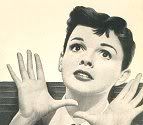
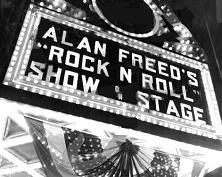
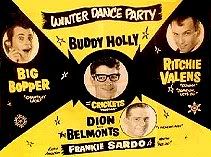
The Winter Dance Party Tour,
January 23-February 15, 1959

|
_________________________________________________
|
|
|
RetroLisa
| ___________________________________________________________________ | __ | _____________________________ | _______ | Music Radio
top 40 radio
During the early years, a typical broadcast day offered something for everyone. It was extremely rare for a radio station to focus on only one type of programming. Dramas, comedies, dance music and variety shows were programmed in blocks, much like TV content is programmed today.
During this time, live music was the name of the game. Some announcers ignored this trend and played records on the air. In the 1940s, they were the first radio personalities to be called disc jockeys.
When the scripted radio shows moved to TV in the early 1950s, radio stations were left with large blocks of time to fill. Two men, Todd Storz and Gordon McLendon, are credited with inventing the Top 40 radio format at this time. Their stations played only the top hits of the day, based on record store surveys.
This new format devoted the entire day to recorded music, which was a radical departure from what listeners were accustomed to. This was essentially the birth of radio as we know it, and the style is still with us today.
FM radio
On the FM side, programming generally consisted of educational shows and classical music. When AM and FM stations shared ownership, the same content was often simulcast on both sides. FM was still regarded as a minor player in the radio world, and most station owners didn't think it was necessary to develop programming especially for it.
Rock Radio Scrapbook
Alan Freed
History Of Rock: Alan Freed
Alan Freed In 1954
History Of Top 40 Radio
Elvis & Disc Jockeys Of The 50s
| |
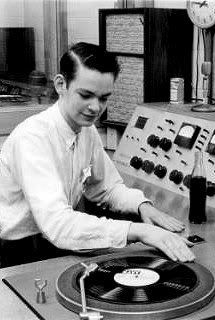
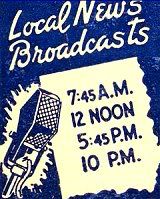
|
__________________________________________
|
|
|
RetroLisa
| ___________________________________________________________________ | __ | _____________________________ | _______ | Radio Shows
In the early 1950s, many classic radio shows were still on the air. When the popularity of television kicked in, most of these programs either went off the air or moved to TV.
Back in the 1920s, soap operas and live musical performances were the first two formats to succeed on the radio. Ironically, they were also the last two formats to survive in the late 1950s. The golden age of radio was over.
What Is A Private Eye, Anyway?
50s Radio Memories
The Funniest Joke Ever

classic moments
*Jack Benny: Every Christmas, it was the same story...Jack tried to buy the perfect gift for his announcer Don Wilson, while spending the least amount of money possible!
*Fibber McGee: When will he learn not to open that closet door? He knows all that stuff is going to fall out!
*A Holiday Tradition: Nearly every year from 1934 to 1953, Lionel Barrymore treated us to his portrayal of Ebenezer Scrooge in "A Christmas Carol."
| |

online audio
Radio Spirits
Yesterday USA
My YouTube Playlist: 1950s Radio
OTR Network Library
Radio Lovers


|
__________________________________________
|
|
|
